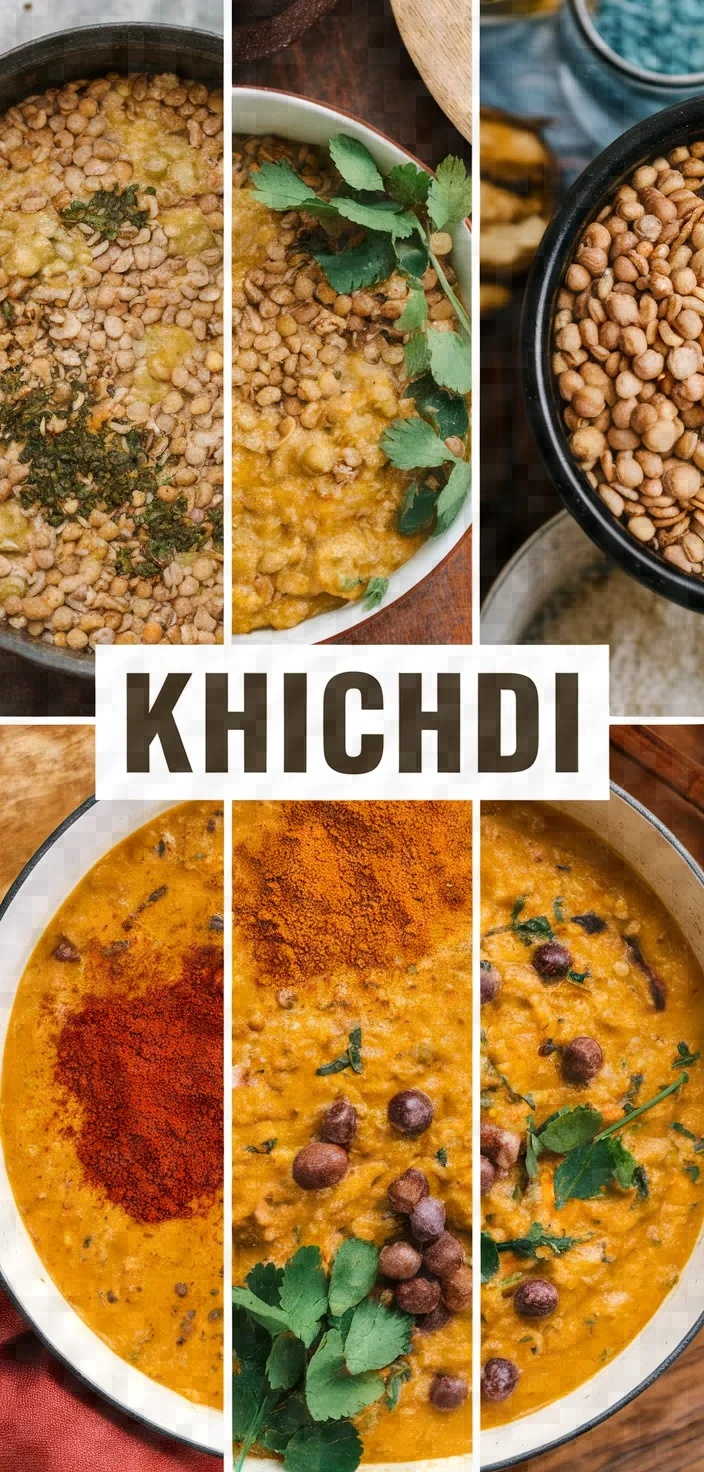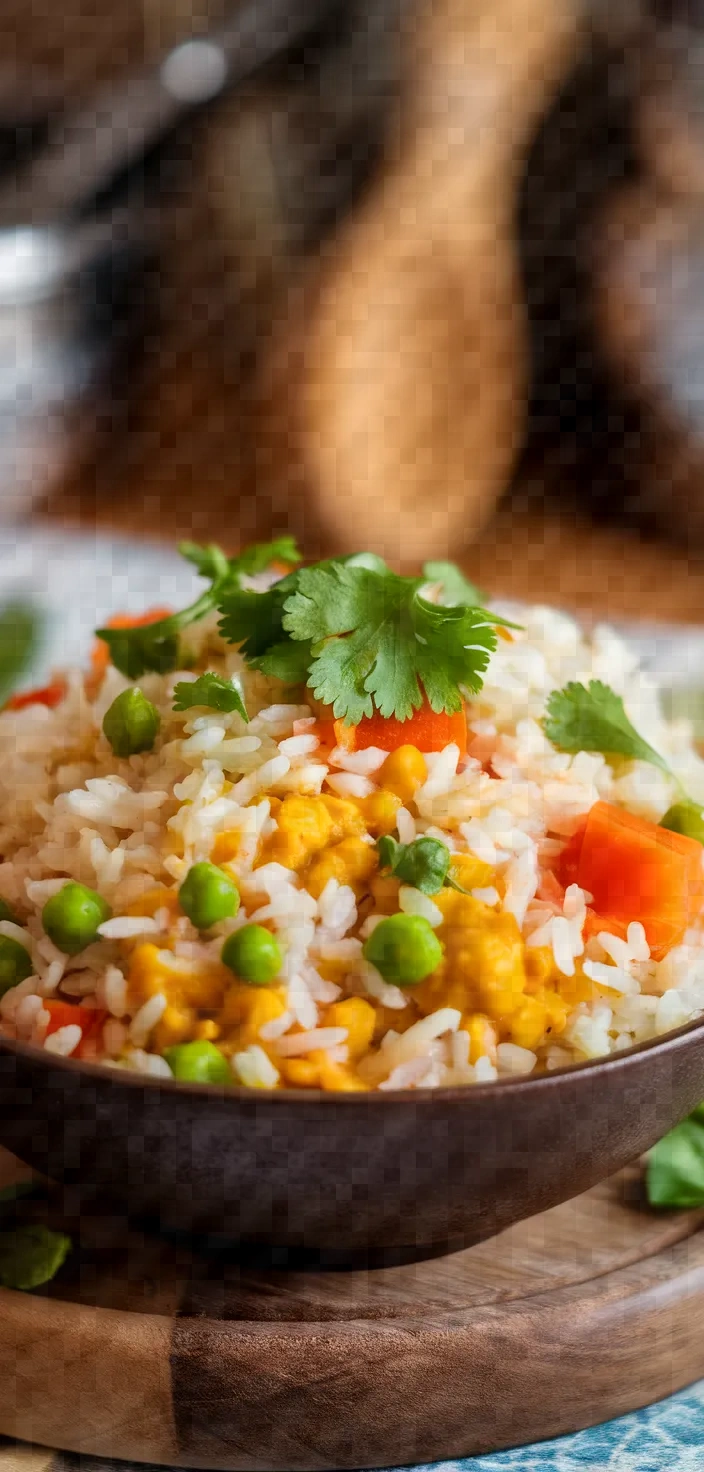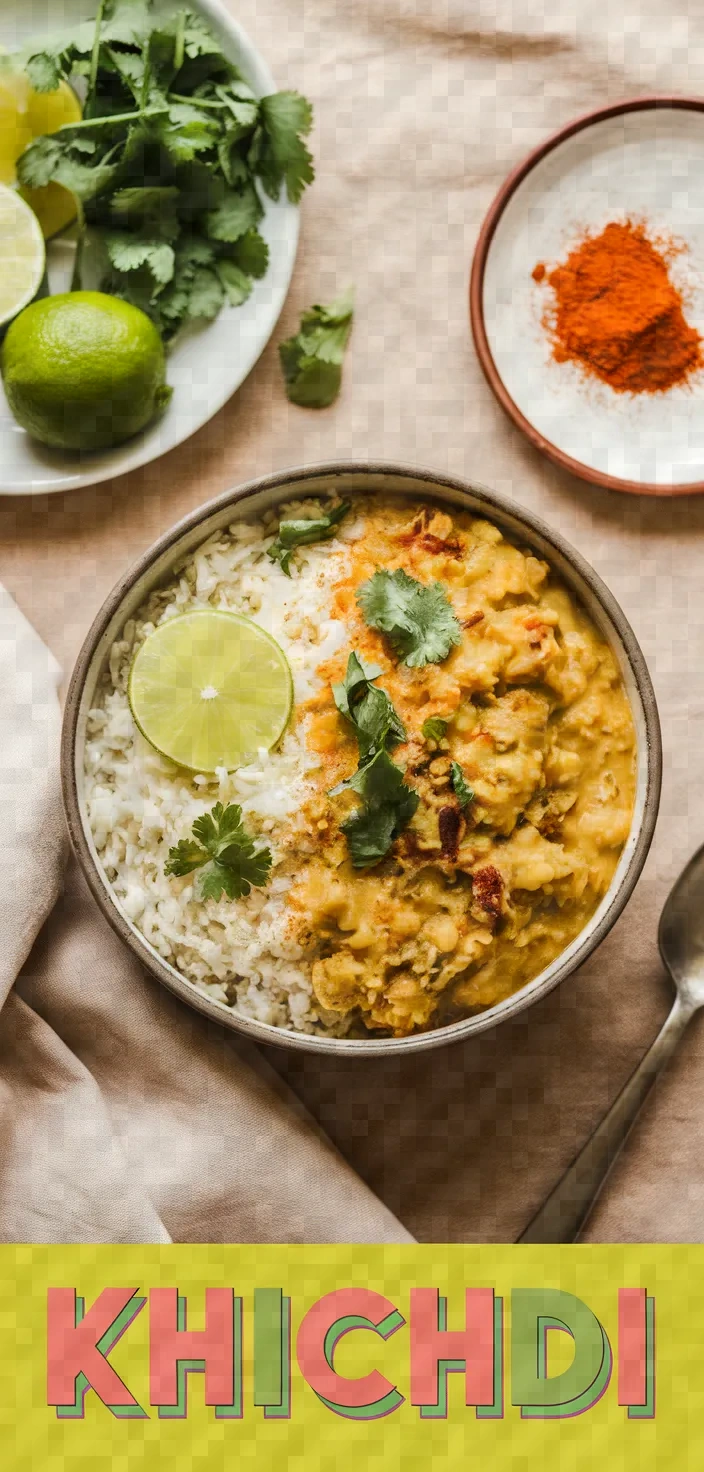Ready to embark on a comforting culinary journey with me? Let’s whip up some soul-soothing khichdi that’ll warm your heart and delight your taste buds with every bite!

My khichdi recipe brings together the warm earthiness of basmati rice and the split yellow moong dal in what I truly consider a comfort meal. This dish is very close to my heart, both because I grew up eating it and because I really enjoy making it.
This version is simply flavored with cumin, mustard seeds, and a hint of asafetida, with no further adornment in the way of spices. You could consider it a riff on khichdi as I am sure you have seen or tasted it before, but I think you will find it instantly appealing in its straightforward simplicity and warmth.
Khichdi Recipe Ingredients

- Basmati rice: Provides carbohydrates; adds a fragrant aroma and light texture.
- Split yellow moong dal: High in protein; easily digestible and adds creaminess.
- Ghee: Rich in healthy fats; enhances flavor and aids nutrient absorption.
- Cumin seeds: Adds earthy flavor; supports digestion and metabolism.
- Turmeric powder: Anti-inflammatory properties; adds color and earthy taste.
- Asafoetida (hing): Aids digestion; provides a unique pungent aroma.
- Vegetables (optional): Provide fiber and nutrients; add texture and variety.
Khichdi Recipe Ingredient Quantities
- 1/2 cup basmati rice
- 1/2 cup split yellow moong dal (mung bean)
- 2 tablespoons ghee or oil
- 1 teaspoon cumin seeds
- 1/2 teaspoon mustard seeds
- 1 pinch asafoetida (hing)
- 1 medium onion, finely chopped
- 1 small tomato, chopped
- 1 teaspoon ginger-garlic paste
- 1/4 teaspoon turmeric powder
- 1/4 teaspoon red chili powder (optional)
- 1/2 teaspoon garam masala
- Salt, to taste
- 3 cups water
- 2 tablespoons chopped fresh cilantro leaves
- Optional: vegetables like peas, carrots, potatoes, cut into small pieces
How to Make this Khichdi Recipe
1. Wash the basmati rice and moong dal together under a steady stream of water until the water runs clear, then soak them in water for about 15 minutes. Allow them to drain in a colander, and set aside.
2. In a pressure cooker, over medium heat, warm ghee or oil. Then add in the cumin seeds and mustard seeds, letting them splutter.
3. Add a small amount of asafoetida, and then add the chopped onion. Cook the onion until it has turned golden brown.
4. Incorporate the ginger-garlic paste and sauté until the raw scent has fled. Then, pour in the diced tomato and simmer until it softens.
5. Incorporate the turmeric, red chili (if using), and garam masala. Stir well and combine the spices in this step of the recipe.
6. Put the drained rice and moong dal into the cooker, and heat them with the spices for a couple of minutes so they can get to know each other better. What does this odd phrase mean? It means that the spices get evenly coated on the rice and dal. Spices are your friends when it comes to making biryani. They come in many shapes and forms, and they work best when they are whole.
7. Add 3 cups of water. Pour in the salt to taste, and let any optional vegetables join in as well. Stir together the liquid and solids.
8. Fasten the pressure cooker lid and cook at high pressure for 2 whistles. Then reduce the heat and cook at low pressure for an additional 5 minutes.
9. Remove the pot from the heat and allow the cooker to release its steam naturally. When all the steam has escaped, carefully open the lid and fluff the khichdi with a fork.
10. Before serving, garnish with chopped cilantro leaves. Warm khichdi, enjoyed with yogurt or a side of pickles, makes an excellent meal.
Khichdi Recipe Equipment Needed
1. Colander
2. Measuring cups and spoons
3. Medium bowl
4. Pressure cooker
5. Cooking spoon or spatula
6. Knife
7. Cutting board
8. Fork
FAQ
- What type of rice is best for Khichdi?For its allure and constitution, basmati rice is used more traditionally, but any medium-grain rice can work.
- Can I make Khichdi without using ghee?– Yes, any kind of vegetable oil can substitute for ghee in a vegan version.
- How can I make Khichdi spicier?– Adjust the quantity of red chili powder or add minced green chilies to suit your desired level of spiciness.
- Is it necessary to soak the rice and dal before cooking?– It’s not essential, but letting them lie in water for 20-30 minutes can help them prepare for cooking. It can also assist them in reaching a softer texture.
- What vegetables can I add to Khichdi?– Common additions include peas, carrots, and potatoes. These staples can be supplemented with bell peppers, spinach, or similar vegetables to add variety and flair.
- How can I store leftover Khichdi?– Keep it in a container that doesn’t allow air to touch it and store it in the cold part of the refrigerator for up to 2-3 days. Add a bit of water to it before you reheat it to ensure the dish has enough moisture.
- Can I cook Khichdi in a pressure cooker?– Correct, using a pressure cooker makes for speedier cooking. Use the same components and allow for about two whistles of cooking time.
Khichdi Recipe Substitutions and Variations
You can use jasmine rice or brown rice instead of basmati rice.
Replace the split yellow moong dal with red lentils or split yellow peas.
If ghee is not available, use butter or coconut oil.
When you don’t have cumin seeds, consider using fennel seeds or caraway seeds.
Substitute 1/2 teaspoon ginger powder and 1/2 teaspoon garlic powder for the fresh ginger-garlic paste.
Pro Tips
1. Rinsing Rice and Dal Make sure to wash the basmati rice and moong dal thoroughly until the water runs clear. This step removes excess starch, preventing the khichdi from becoming too sticky.
2. Enhancing Flavor Toast the cumin and mustard seeds in the ghee or oil until they begin to splutter. This releases their essential oils and enhances the flavor of the dish significantly.
3. Vegetable Addition For additional flavor and nutrition, consider adding seasonal vegetables like peas, carrots, or small potato cubes. Sauté them along with the onions for better integration into the flavor profile of the khichdi.
4. Spice Adjustment Adjust the amount of red chili powder and garam masala based on your preferred spice level. If you enjoy a milder khichdi, reduce the quantities incrementally.
5. Resting Time After cooking, allow the khichdi to rest for 5-10 minutes with the lid on after releasing the pressure. This helps in the absorption of flavors and results in a more cohesive texture.

Khichdi Recipe
My favorite Khichdi Recipe
Equipment Needed:
1. Colander
2. Measuring cups and spoons
3. Medium bowl
4. Pressure cooker
5. Cooking spoon or spatula
6. Knife
7. Cutting board
8. Fork
Ingredients:
- 1/2 cup basmati rice
- 1/2 cup split yellow moong dal (mung bean)
- 2 tablespoons ghee or oil
- 1 teaspoon cumin seeds
- 1/2 teaspoon mustard seeds
- 1 pinch asafoetida (hing)
- 1 medium onion, finely chopped
- 1 small tomato, chopped
- 1 teaspoon ginger-garlic paste
- 1/4 teaspoon turmeric powder
- 1/4 teaspoon red chili powder (optional)
- 1/2 teaspoon garam masala
- Salt, to taste
- 3 cups water
- 2 tablespoons chopped fresh cilantro leaves
- Optional: vegetables like peas, carrots, potatoes, cut into small pieces
Instructions:
1. Wash the basmati rice and moong dal together under a steady stream of water until the water runs clear, then soak them in water for about 15 minutes. Allow them to drain in a colander, and set aside.
2. In a pressure cooker, over medium heat, warm ghee or oil. Then add in the cumin seeds and mustard seeds, letting them splutter.
3. Add a small amount of asafoetida, and then add the chopped onion. Cook the onion until it has turned golden brown.
4. Incorporate the ginger-garlic paste and sauté until the raw scent has fled. Then, pour in the diced tomato and simmer until it softens.
5. Incorporate the turmeric, red chili (if using), and garam masala. Stir well and combine the spices in this step of the recipe.
6. Put the drained rice and moong dal into the cooker, and heat them with the spices for a couple of minutes so they can get to know each other better. What does this odd phrase mean? It means that the spices get evenly coated on the rice and dal. Spices are your friends when it comes to making biryani. They come in many shapes and forms, and they work best when they are whole.
7. Add 3 cups of water. Pour in the salt to taste, and let any optional vegetables join in as well. Stir together the liquid and solids.
8. Fasten the pressure cooker lid and cook at high pressure for 2 whistles. Then reduce the heat and cook at low pressure for an additional 5 minutes.
9. Remove the pot from the heat and allow the cooker to release its steam naturally. When all the steam has escaped, carefully open the lid and fluff the khichdi with a fork.
10. Before serving, garnish with chopped cilantro leaves. Warm khichdi, enjoyed with yogurt or a side of pickles, makes an excellent meal.
